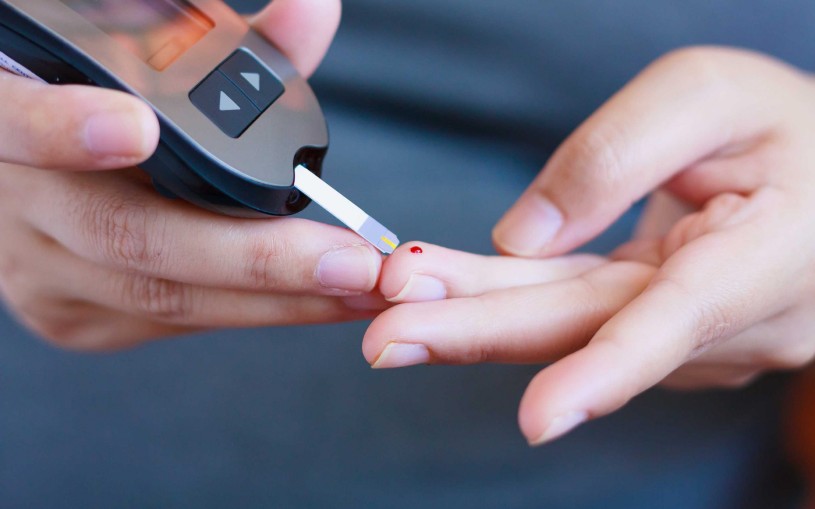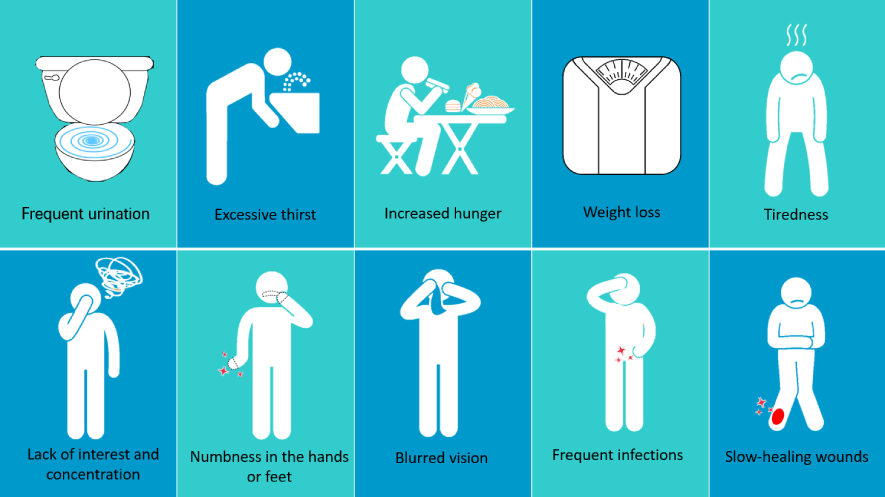
Once diagnosed, diabetes is a condition that is most likely to remain forever with you. The key to keep your symptoms in control, whether you have type 1 or type 2 diabetes, is to maintain your blood sugar level with average range and avoid spikes in blood sugar. Favorably, many symptoms of diabetes are entirely manageable, and medications can also help you get rid of the most bothersome symptoms.
Following is a piece of complete information about the diagnosis and management stages of symptoms of diabetes and how to treat them.
Type 1 Diabetes Symptoms: At Diagnosis
When the pancreas stops producing insulin, type 1 diabetes takes place. It is generally diagnosed in childhood or adolescence; however, adults can also be diagnosed with type 1 diabetes.
The symptoms occurring due to type 1 diabetes often come suddenly. At the beginning of the condition, a patient may experience frequent urination, weight loss, excessive thirst or hunger, or blurred vision. The person may also have a sweet fruit-like smelling odor in the breath.
Symptoms may be severe if diagnosed in a more advanced phase. Extreme manifestations of type 1 diabetes include high blood sugar level, chest pain, abdominal pain, headache, shortness of breath, seizures, or even coma in more severe cases.
Type 2 Diabetes Symptoms: At Diagnosis
The most common form of diabetes is type 2 diabetes. It is frequently diagnosed in adults. Type 2 diabetes develops when cells of the body become less sensitive to the insulin effects. Insulin is the hormone that regulates blood sugar levels.
Type 2 diabetes is often diagnosed without symptoms. If a person experiences a sign, they are vague, like weakness or fatigue, or the person may not feel like the same. A person with type 2 diabetes may fall sick more frequently, or the wounds do not heal on time.
If type 2 diabetes is present and undetected for a long time, a person may have pronounced symptoms like dehydration and confusion after diagnosis in a later phase.
Treatment Symptoms of Type 1 and Type 2 Diabetes
Once a person is correctly diagnosed with type 1 or type 2 diabetes, a healthcare provider helps begin the treatment with daily management, teaching how to relieve symptoms of diabetes. However, the management of diabetes itself can lead to other symptoms.
Oral Therapy Symptoms:
- After starting oral medication like metformin, a person may have gastrointestinal symptoms such as nausea, vomiting, or diarrhea. These side effects subside as the body gets used to the medication. Using metformin capsules instead of tablets can also lessen the side effects.
- Other oral diabetes medications have side effects such as weight gain, low blood sugar, or increased cardiovascular risks. The healthcare provider should evaluate a patient’s health history and decide which medication is better for an individual patient like more benefits and fewer side effects.
Insulin Therapy Symptoms:
- Starting insulin therapy can make a person check blood sugar levels several times a day, which results in finger irritation or soreness. A person on insulin therapy may also have skin irritation, hardness, bruising or lumps at injection sites. Using a glucose monitor or insulin pump can lessen skin symptoms.
- A person taking insulin may feel symptoms such as headache, dizziness, fatigue, or confusion when the blood sugar levels drop. These symptoms are a significant sign of a medical emergency. A person taking insulin should always carry emergency materials such as hard candies or glucose tabs to help in those conditions.
Diabetes Chronic Symptoms
Chronic symptoms of diabetes occur from high blood sugar (hyperglycemia) level that damages body cells. These symptoms generally appear when a person has spent years with diabetes. Given below are some chronic symptoms of long-term diabetes:
Neuropathy
High blood sugar levels can damage the peripheral nerves of the body. It can cause numbness and pain in extreme conditions. Medications like pregabalin help reduce the painful symptoms of diabetic neuropathy.
Bad Wound Healing
High blood sugar levels mutilate blood vessels that lead to blood circulation problems. Diabetes makes it hard for an immune system to repair when a diabetic person has an injury, such as a scrape or cut. Damage is difficult to repair because there is a decreased distribution of immune cells and blood to that area. It is more common in feet and can cause foot infections, ulcers, and even amputations. Diabetes patients can prevent this by taking care of their feet, wearing protective socks and shoes, and regularly visiting a foot doctor.
Visual Disturbances
Diabetes can cause visual disturbances such as blurred vision or even blindness. To prevent them, keep blood sugar and blood pressure levels in control. Regularly visit an eye doctor for eye checkups. Injectable medications are available to help with these symptoms if the condition progress.
Urinary Problems
Diabetes causes damage to the bladder nerves. A diabetic person can experience symptoms like urinary incontinence, urinary retention, and increased urinary tract infections. There are specific medications that help control these symptoms by controlling your blood sugar levels.
Fatigue and Mood Changes
Diabetes can cause tiredness and fatigue as it leads to dysregulation of the body. Having a lifelong chronic disease like diabetes may also make a person feel depressed. A diabetes diagnosis can be a drastic change in lifestyle, followed by discomforting symptoms from both disease and treatment. A diabetic person feeling depressed or anxious should talk to healthcare providers. Medications help relieve diabetes, but they are most effective in combination with illness-specific support groups and trained therapists.

